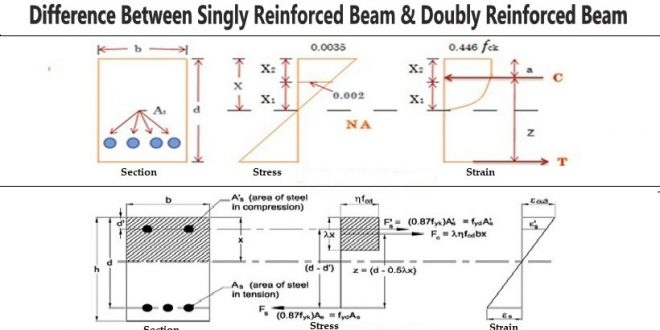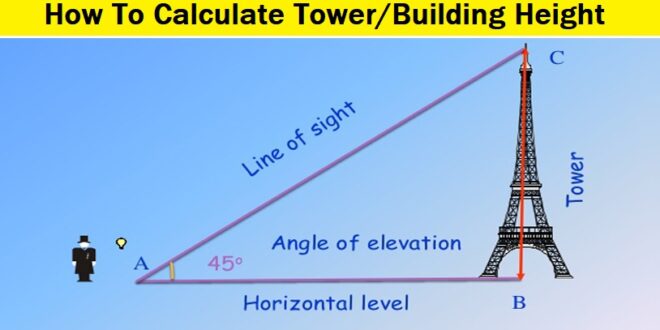Force is basically a push or pulls acting upon an object resulting from the interaction of one object with another object. Every time there is an interaction between two objects there will be a force acting upon each of the objects. When the interaction stops there will be no force on the two objects. Forces only exist due to an interaction of any two objects.
Force is measured using the standard metric unit called Newton. Newton is abbreviated by an “N”.
One Newton is the amount of force needed to give a one-kilogram mass an acceleration of one meter per second squared (m/s2).
Force are of two types namely contact force and Non-contact force.

Compression and tension are the two main principle forces involved in any structure. Each material can withstand a certain amount of tension as well as compression. Some materials are good at handling compression and some materials can bear tension easily. Some materials can handle both tension and compression effectively.
What Is Tension?
The word Tension is derived from the Latin word meaning “to stretch”. The forces that are acting away from each other is known as tension force. Tension is nothing but a pulling force transmitted axially through a rope, string wire, or similar one-dimensional continuous object when pulled by forces acting from opposite sides.
In simple words, a Tension force is a force that pulls the material apart and tries to stretch a material.
Tension force is represented by the symbol T. Ductile materials such as aluminum, steel, and other metals are used to withstand the tensile forces.

Tension (T)= m×g
Where m= mass in kg, g= 9.8 m/s2
Tensile stress is the tension force per unit area and tensile strain is the ratio of increase in length to the original length of material is called tensile strain.
Following are some of the key points to know about Tension
- Tension force is the force that tries to stretch or elongate a body or an object.
- The overall forces are pulling away from the object if the body is in tension
- Tension belongs to the force promulgation method.
- Tension is only applicable in ductile materials.
- In tension, the direction of force is outward or away from each other.
Some of the examples of tension are ropes, the cable of crane, nails, threads etc.,
What Is Compression?
The word Compression is derived from the Latin word meaning “a pressing together”. The forces that are acting towards each other are known as compression forces.
In a structural system, compression is the term that describes a force that squeezes down upon another structural member or immobile component. The compression results in compaction due to which the relative positions of atoms and molecules of the object change.
This change can be permanent or temporary depending upon the material type. Usually, brittle materials like concrete, ceramics, and glass are used to withstand the compressive forces.
The deformation of an object entirely depends upon the compression force. The materials which can withstand high compression forces with little deformation are good for buildings.
In construction, compression is done to stabilize various substrates such as gravel, to provide a strong and compacted base material. The compression of material is also known as compaction.
The compaction of material basically means to remove the air voids as much as possible and to improve the packing of material. There are numerous types of construction equipment used to compact the soil, gravel, and other materials. Some of them are Vibratory rollers, tampers, hammers, etc.
Compression force is measured in Newtons(N). Compression force is represented by the symbol C.
Compression = m×a
Where m= mass in kg, a= 9.8 m/s2

Compressive stresses are the compressive force per unit area and compressive strain is the ratio of reduction in length to the original length.
Following are some of the key points to know about Compression
- Compression force the force that tries to squeeze or shorten the body or an object.
- If the body is subjected to compression then the forces acting upon it are directed towards the body
- Compression can be applied to any material.
- Compression can be used in hydraulic systems for the transference of force as pressure.
When the material undergoes bending then it experiences both tension and compression simultaneously.
Let us consider a beam, when the load is applied on a beam its top part experiences compression, and the bottom or soffit of beams experiences tension. A layer at the middle of the beam called the neutral axis experiences zero stress due to bending. Consider the below figure.

As the beam is subjected to both compression and tension, we use reinforced cement concrete for the casting of the beam. In reinforced cement concrete steel reinforcement is provided at the bottom to resist the tension.
Difference Between Tension Vs Compression:
| Tension | Compression |
| Tension force tries to elongate or stretch the material. | Compression force tries to shorten the body. |
| Tension pulls materials apart. | Compression squeezes material together. |
| In tension, all forces are acting away from the object. | In compression, all the forces are acting towards the body. |
| Tension may be linked to the pulling of material at the end. | Compression may be correlated with the pushing of material inward. |
| Tension applies to strings. | Compression can be applied to any material. |
| In tension the movement of the force is outward from the object. | The movement of the force acting on the object is always inward to the object. |
Tension & Compression In Concrete Structure:
On the basis of compression and tension, All the concrete structure divided into three categories
- Compression member.
- Tension member.
- Flexural member.
Columns are the compressive members which transfer loads coming from beam and slab to the footing. Columns fail due to buckling.
If you like this article then please share it with your friends & also like our Facebook Page and join our Telegram Channel.




